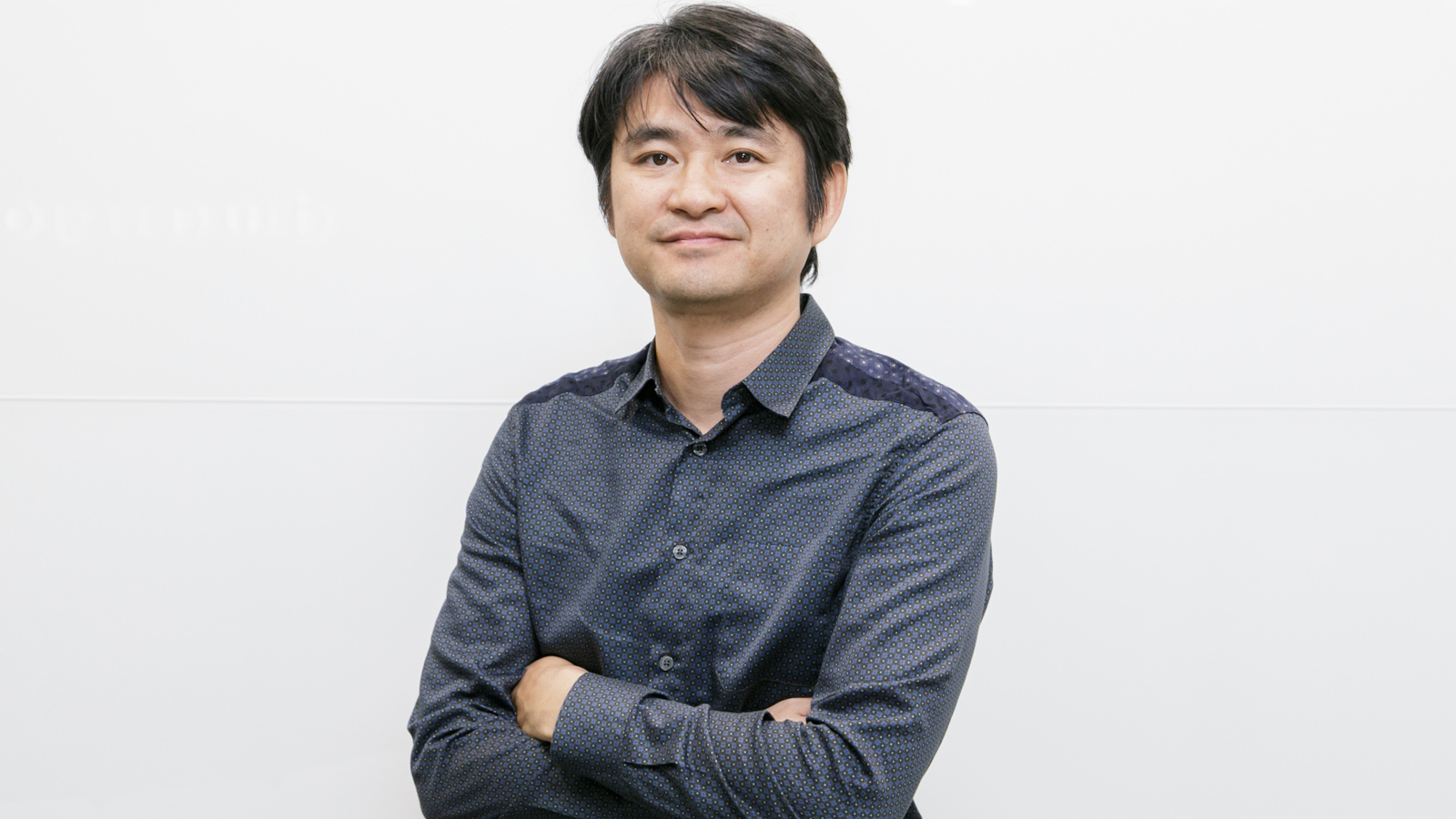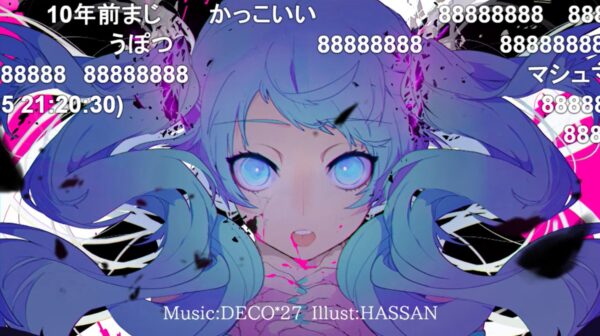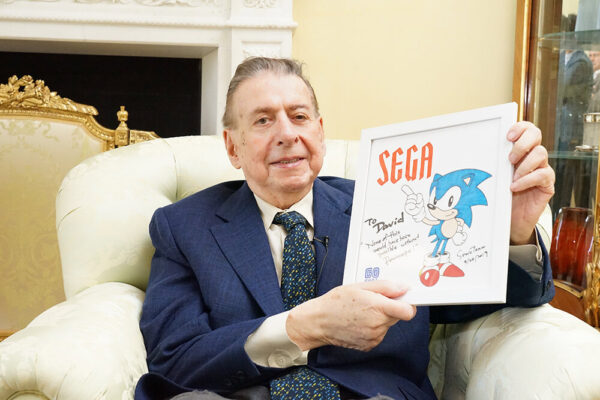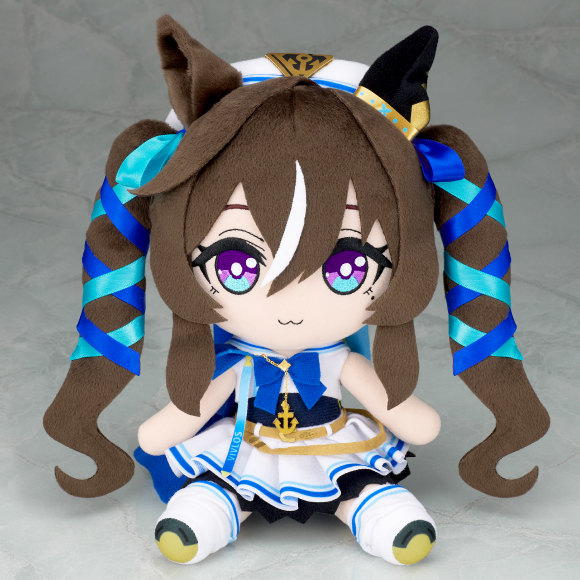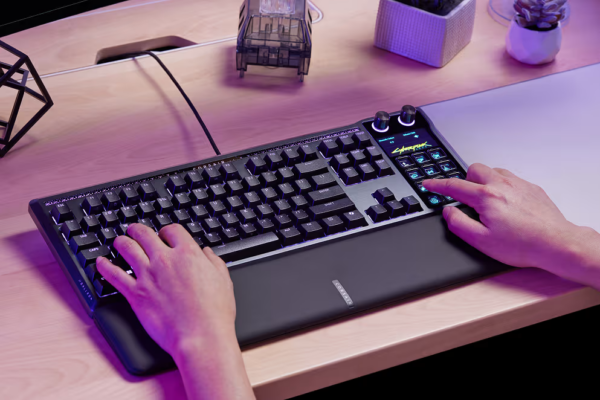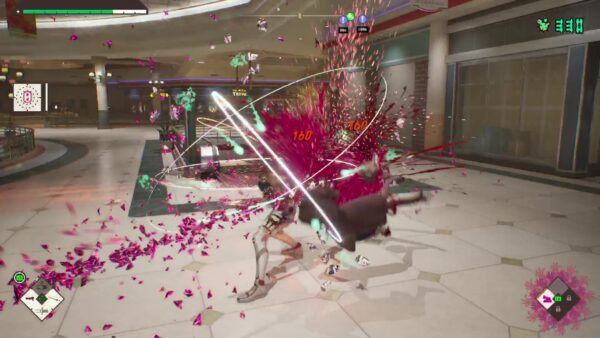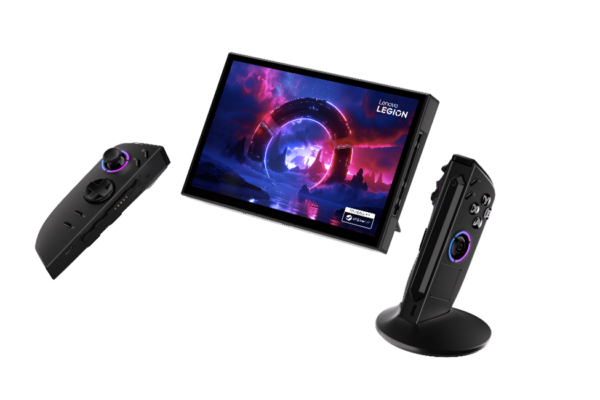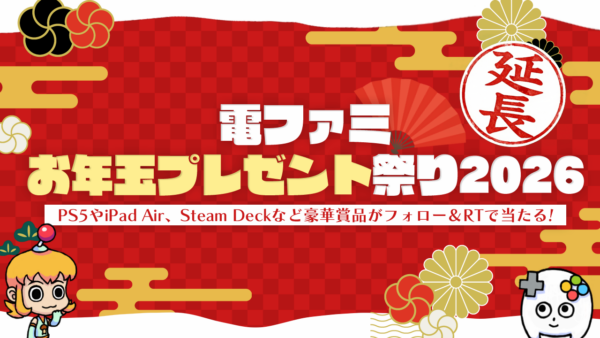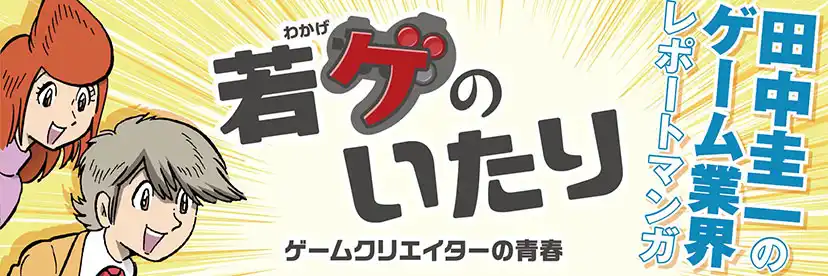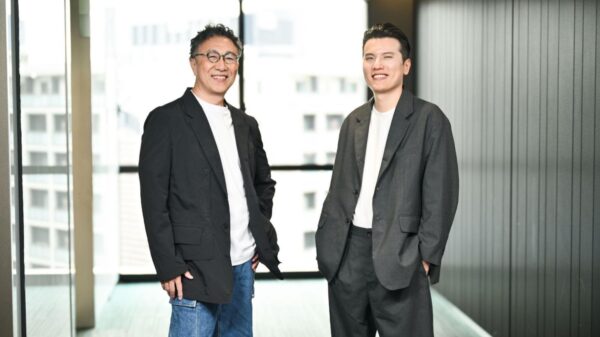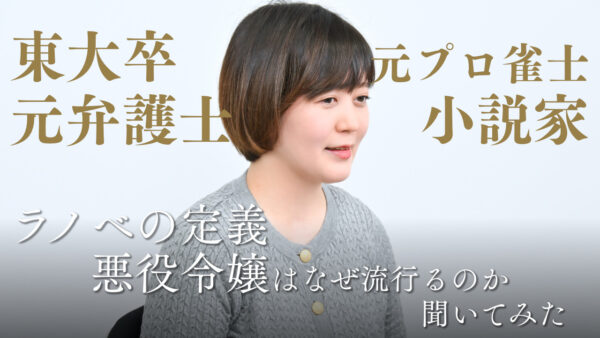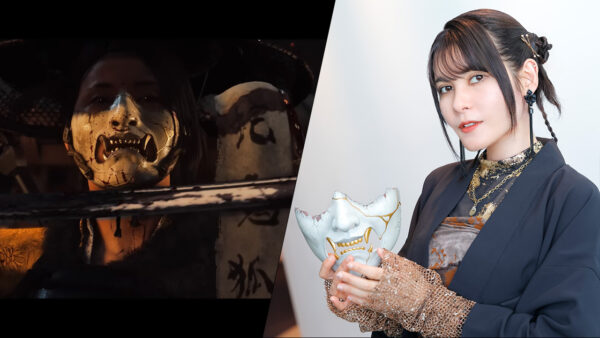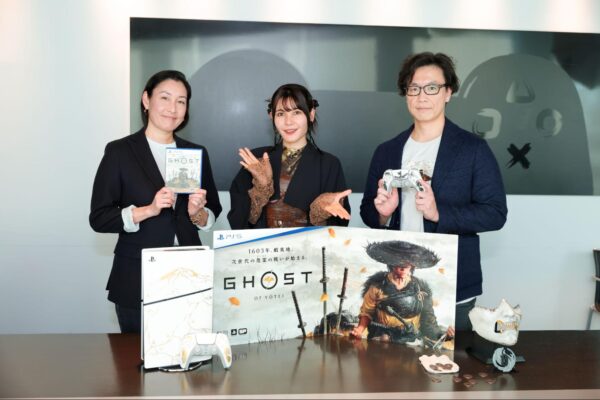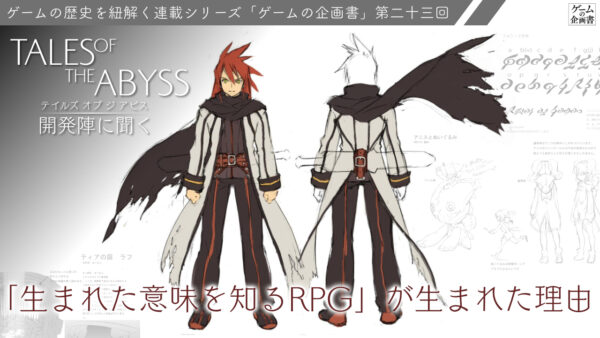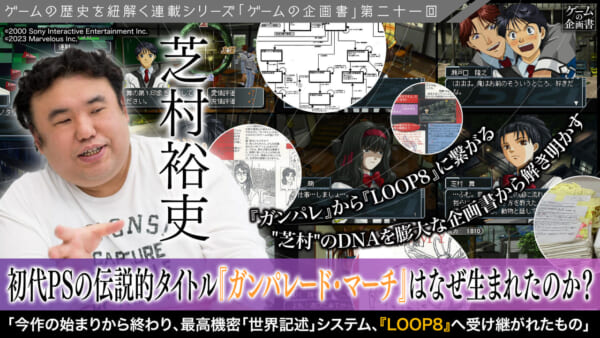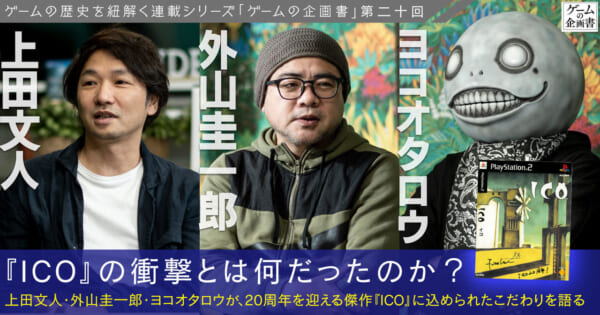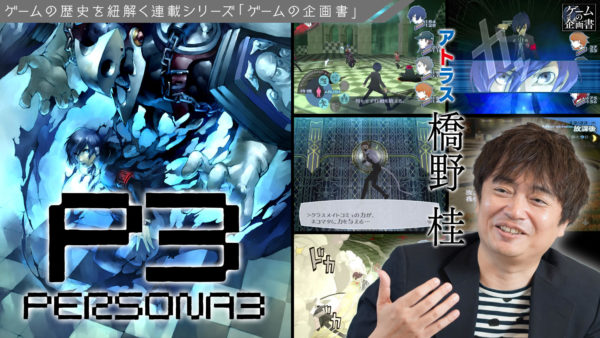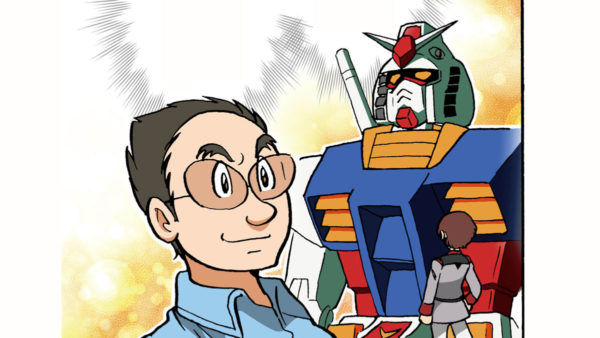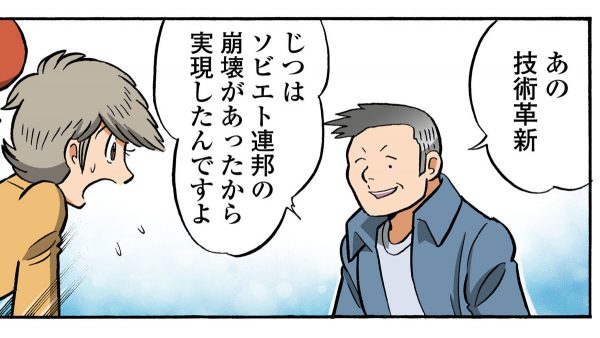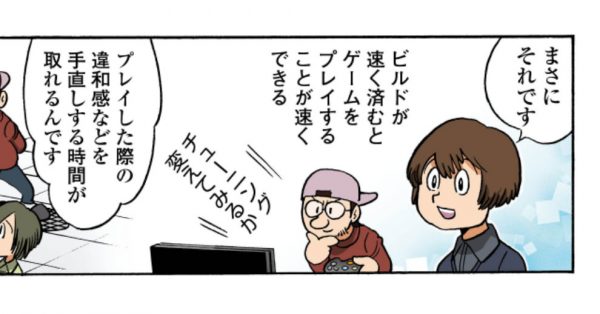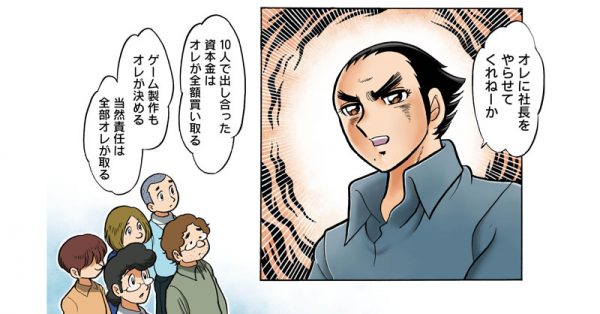Launching an emotion design laboratory and the early stages of 3D video games
— By the way, when I interviewed Yu Suzuki the other day, I heard that only people hired through the recruitment season could become directors at SEGA. What kind of position did you have, Mr. Mizuguchi?
Mizuguchi:
What was it? …… I was hired during the recruitment season, though. At that time,I was called “ the person without a clear occupation.” (laughs).
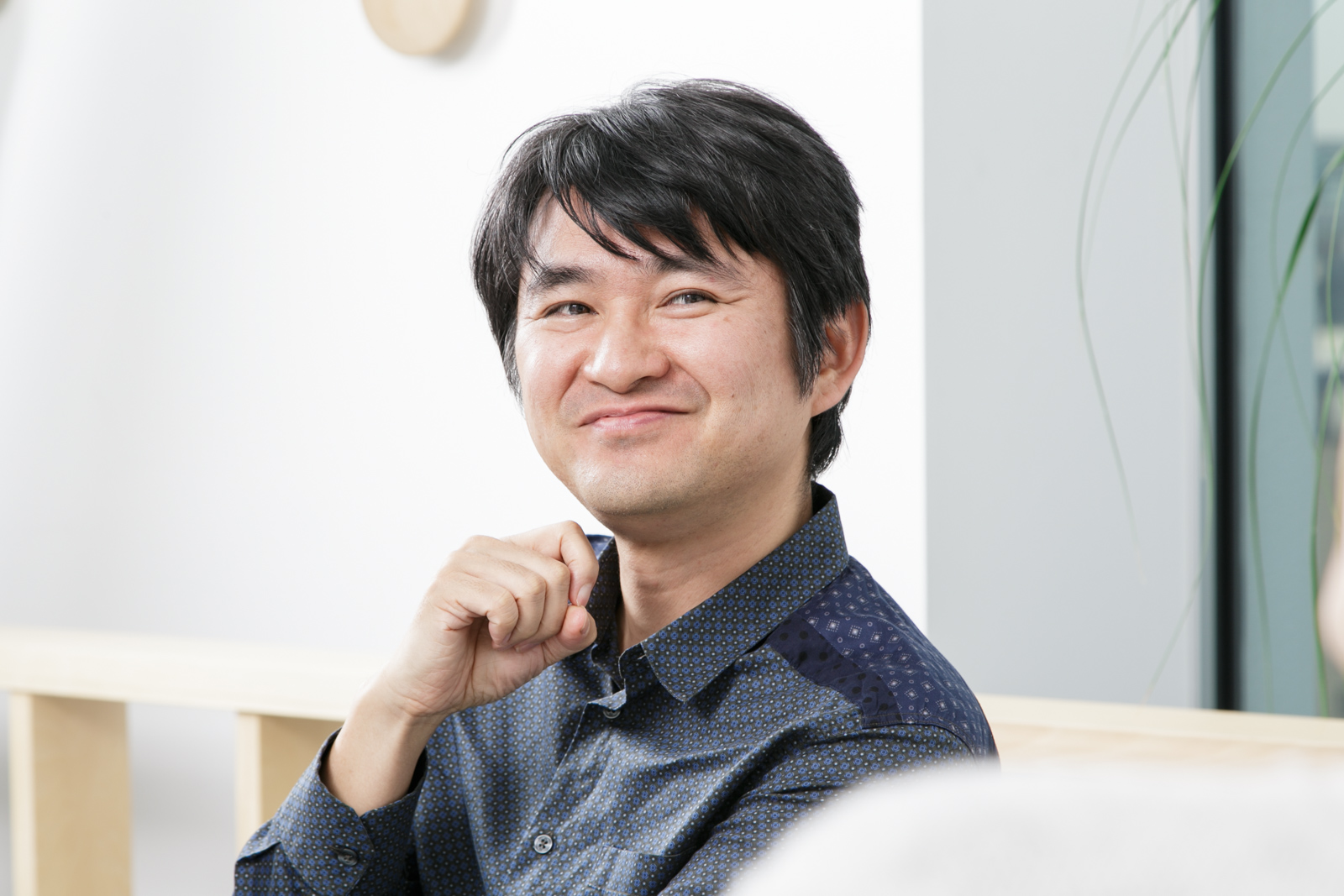 |
—I see…!?
Shimizu:
Yeah, I think it was true. When I first heard about Mr. Mizuguchi at SEGA, they were saying “There’s some guy who can’t even program but is the director of AM research.”
Everybody:
(laughs)
Mizuguchi:
A while after the new recruit training, Mr. Suzuki told me to “stay by my side.” So I was kind of half assisting, half researching, and accompanying Mr. Suzuki on overseas business trips. Then, a message from HR came to “create a department name.” Mr. Suzuki told me “Think of some cool department name by yourself.” Which is why I called it the “emotion design laboratory.”
Shimizu:
How did a first year new employee have his own laboratory? (laughs).
Mizuguchi:
So, I gathered the designers inside the company and started workshops to think about “how to make fun video games” or “what is the structure of a fun video game?“ By comparing video games with films, we seriously discussed and analyzed, “Why can a movie make me cry but a video game can’t”.
— It sounds like it really was a laboratory. Did the designers like Mr. Yu Suzuki of AM2 Institute or Mr. Toshihiro Nagoshi[*] make an appearance too?
*Toshihiro Nagoshi
Japanese video game designer born in 1965. Director and Chief of Development Headquarters and General Headquarters of SEGA Games and Director CPO and General Manager of Development Headquarters of SEGA · Interactive. Participated as a CG designer for works such as “Virtua Racing” and “Virtua Fighter,” overseen by Yu Suzuki. Served as producer for the first time with “Daytona USA,” followed by the “Super Monkey Ball” series and “F-ZERO GX” and “F-ZERO AX” (among Nintendo’s racing game series “F-ZERO”) receiving high praise. Currently active as a producer for SEGA’s popular “Yakuza” series.
Mizuguchi:
Sometimes they came. I would ask Yu Suzuki, “For this theme, we’re going to invite F3 drivers, so please come,” or invite guests from the outside on a regular basis.
Of course, there were many old-fashioned thinking people working inside of SEGA. They would say things like, “Video games are different from reality. Don’t think you can make something fun in such a way.” At that time, I thought, “bastards,” and would say things like, “with old thinking like that, you’ll never be able to make anything fun.” We even fought it out too….
— Well, at most Japanese companies, if a new employee acted like that, honestly, everyone would just ignore him. And even if you have a certain power, a higher person would crush you until it’s over.
Mizuguchi:
But it was also a “turning point” in the industry. Because in those days, everyone in development was in their twenties. So you’re a veteran by your thirties. On top of that, it was on the eve of CG’s arrival.
 |
Suddenly, 3DCG technology came out to the world when there’d only been 2D pixel video games, with glimpses of technologies like VR beyond that. In that situation, there was no way for anyone to see where video games or entertainment was heading. So all I could do was research and experiment to find a direction.
— Exactly as Mr. Mizuguchi predicted to Mr. Suzuki, Mr. Mizuguchi’s knowledge of CG and VR was seriously required.
Mizuguchi:
And at the time, there were no titles like producers and directors yet.
For example, when we were putting together a team for “SEGA Rally,” I was asked ”What kind of position will you take?” I answered, “I’ll be a producer,” which was met with “Producer — what do they do?”
— What? From there!?
Mizuguchi:
First of all, even if you explain, “There is a producer and a director … ,” they say, “I don’t understand the difference.” Well, before I entered SEGA, we couldn’t add our real names to the staff credits. But everyone conspired and began to make a ruckus at SEGA. I remember that kind of movement gradually expanding in the industry.
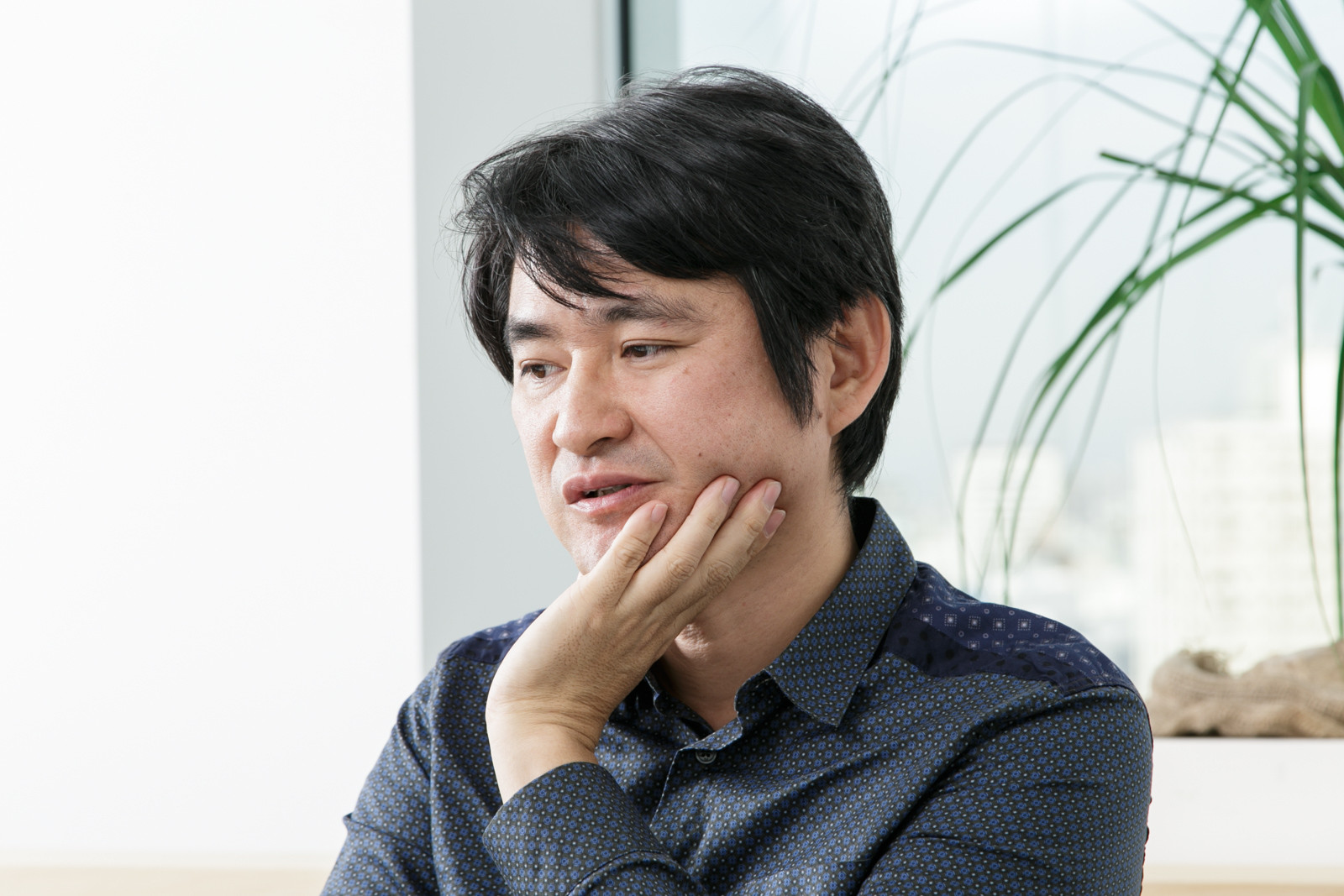 |
— I heard this from Kazuhiko Torishima, Shigeo Maruyama, as well as Mr. Hirokazu Hamamura too, but around the mid 1990s, there was a movement to establish individual “video game designers.” It was probably a kind of contemporary movement.
Mizuguchi:
Anyhow, I think it was a unique situation.
At the moment when the technical base became 3DCG— the way of game programming changed, the design changed — it was a situation where everyone became a beginner. It was necessary to re-think video games from scratch, and I think that was the first movement of a new generation.
Shimizu:
This was when I was at Microsoft, but the Super Nintendo programmers of the generation above me couldn’t do matrix calculation and most hadn’t even gone to university. They just didn’t want to use their brain anymore.
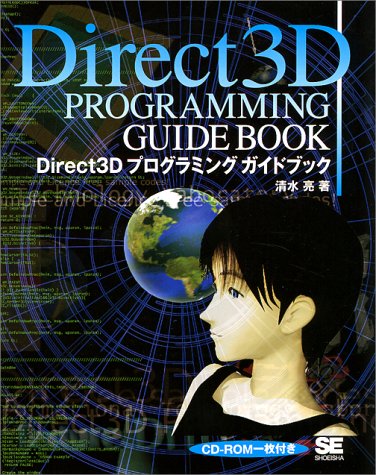
(Image from Amazon)
Then they’d complain, “You say this, but writing a program by yourself is faster than using the API.” And you end up endlessly persuading them, “No, DirectX [*] ‘s API is much faster than you think.” Finally, the veteran programmers from across the country start sending nasty letters. But then it also says, “I made it as you say, but it’s not any faster.” When I look at the code, it’s s full of useless processing, so I end up continuously correcting it and sending it back. They really were a bunch of stubborn people.
*DirectX
A collection of APIs for game and multimedia processing released by Microsoft in 1995. It is widely used in Microsoft’s platforms and devices such as Windows, Xbox, Xbox 360, and Xbox One.
Mizuguchi:
People from the 2D side had only one or two patterns. And they had a hard time accepting new concepts and ideas. I would think, ”What’s this gap?” and there were a lot of times when it made me sad.
But, I was itching to create new things as quick as possible, like 3D and VR. Then, SEGA was creating an interactive simulator ride for Joypolis called “AS – 1” [*], and they decided to make a film for the ride. This was my first project and my first job as a creative.
*AS-1
A large-scale virtual reality (simulated experience) machine for eight people announced by (then) SEGA in 1993. Word buzzed when it was announced the film “Michael Jackson in Scramble Training” would be included with Michael Jackson appearing as instructor “Commander Jackson.”
From “mysterious person” to video game designer
— Oh, so the video project was the first.
Mizuguchi:
Yup. I thought that if I put my hands on high-end CG images first, I could gather fellow colleagues who wanted to work towards the next generation. Anyway, I raised my hand, but no one else did. So I created a new team and requested approval to buy a “Silicon Graphics” [*1] which cost about one million yen back then, and about three units of “Softimage” [*2], which cost about six million yen per unit, and video editing equipment. It was a total of about 100 million yen.
*1 Silicon Graphics
An American company developing, manufacturing and distributing business computers with a history of developing cutting-edge high-performance products specialized in 3D image processing.
*2 Softimage
Software for producing high-end three-dimensional computer graphics by Softimage. With an established reputation for manual motion creation, it has been used to develop many video games including the “Final Fantasy ” series. The last version, released in April 2014, was announced as the final version, to the disappointment of many video game developers.
—That ‘s an awesome environment.
Shimizu:
And really cutting edge globally.
Mizuguchi:
That’s true. But if I talk about that time, it was an age when it took more than 100 million yen to order an image from an external CG company. So there was a feeling that it would be better to accumulate that expertise inside the company.
There weren’t many CG designers in the field yet, so I searched high and low for potential people. It was around this time that I met Kenji Sasaki , who later became the director of the “SEGA Rally” series[*].
*“SEGA rally” series
A series of racing games that manipulates existing rally cars and competes by ranking or elapsed time. Announced by then SEGA in 1995 as an arcade game and later for SEGA Saturn, expanded to Windows PC, mobile applications, Game Boy Advance, PlayStation 2.
— What kind of people were the CG designers you called?
Mizuguchi:
First of all, I invited Michael Arias[*].
*Michael Arias
CG creator, film director from California born in 1968. Moved to Japan in 1991 to work at IMAGICA’s special effects image department, and transferred to SEGA with Mr. Mizuguchi’s invitation. Co-director of “Megalopolice · Tokyo City Battle.” Later moved to New York and founded Syzygy Digital Cinema. Responsible for the computer graphics of various works, like “M. Butterfly” and “The Hudsucker Proxy,” which received various awards. After leaving the production side, he joined the software company Softimage, where he developed and patented software that integrates handwritten animation called “Toon Shaders,” which was used in Hayao Miyazaki’s “Princess Mononoke.” In 2006, he took on the role of director for “Tekkonkinkreet”.
— The animation director for “Tekkonkinkreet”[*].

(Image from Amazon)
Mizuguchi:
Yes, yes. SEGA was trying to make a game for Joypolis with famous special effects director Douglas Trumbull[*1], but Mr. Trumbull’s studio was in rural Massachusetts. And at the same time, USJ was making a “Back to the Future: The Ride” and shooting the DeLorean[*2] flying using a diorama effect.
*1 Douglas Trumbull
An American film director, SFX supervisor born in 1942. A master of the sci-fi world who worked on spectacular pieces such as “2001: A Space Odyssey,” “Close Encounters of the Third Kind,” “Star Trek,” and “Blade Runner.”
*2 DeLorean
A time travel machine built into a car that appeared in the “Back to the Future” series. The car that was the basis for this time machine was the “DMC – 12.”
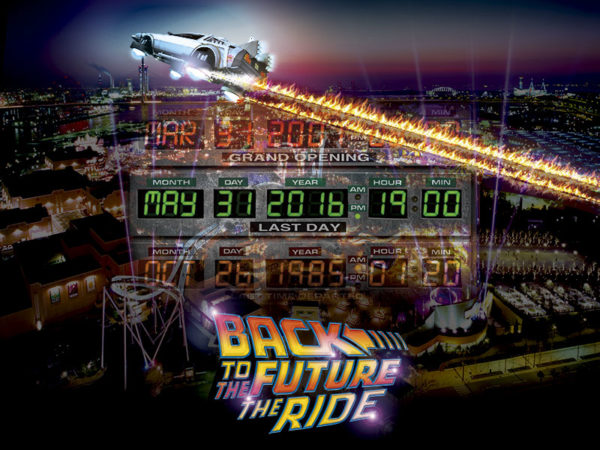
It was Michael Arias who was programming the motion control camera[*] for the DeLorean. At the time, he was still a student at New York University. When I went to meet him, he was majoring in Japanese film and could speak Japanese. We gradually became friends and I took the risk of inviting him and asked, “Do you want to come to Japan and make CG with me?” Because, if he could program a satisfying motion for the DeLorean, he could absolutely render some wonderful movements in CG.
So, with Michael, we finally started to produce CG in Japan, but every day was a series of troubles … (laughs).
*motion control camera
A camera that can control fine movement with a computer. Often used for special effects shooting.
Shimizu:
Well, now, CG is common, but at that time, no one knew what a correct CG expression was.
Mizuguchi:
Initially, the ”rendering wait” time was too long, it took about three minutes to calculate one frame. Just one frame took 3 minutes! And to check a five second scene took all night.
On top of that, going home at night and coming back in the morning, you realize it froze in between. You get irritated and fight (laughs). Every day, it was a repeat of the same thing. I think that time-consuming frustration has been ongoing ever since….
Shimizu:
Then it’s an industry disease (laughs)!
Mizuguchi:
I suppose so (laughs). But by the time the CG ride/film “Megalopolice · Tokyo, City Battle” was complete, and our project ended, Michael was completely a pro with CG. He returned to the USA for a while, and after a few years, came to Japan again saying, “I want to make Taiyō Matsumoto’s ‘Tekkonkinkreet’ into a movie.” That’s when he started his path as a film director.
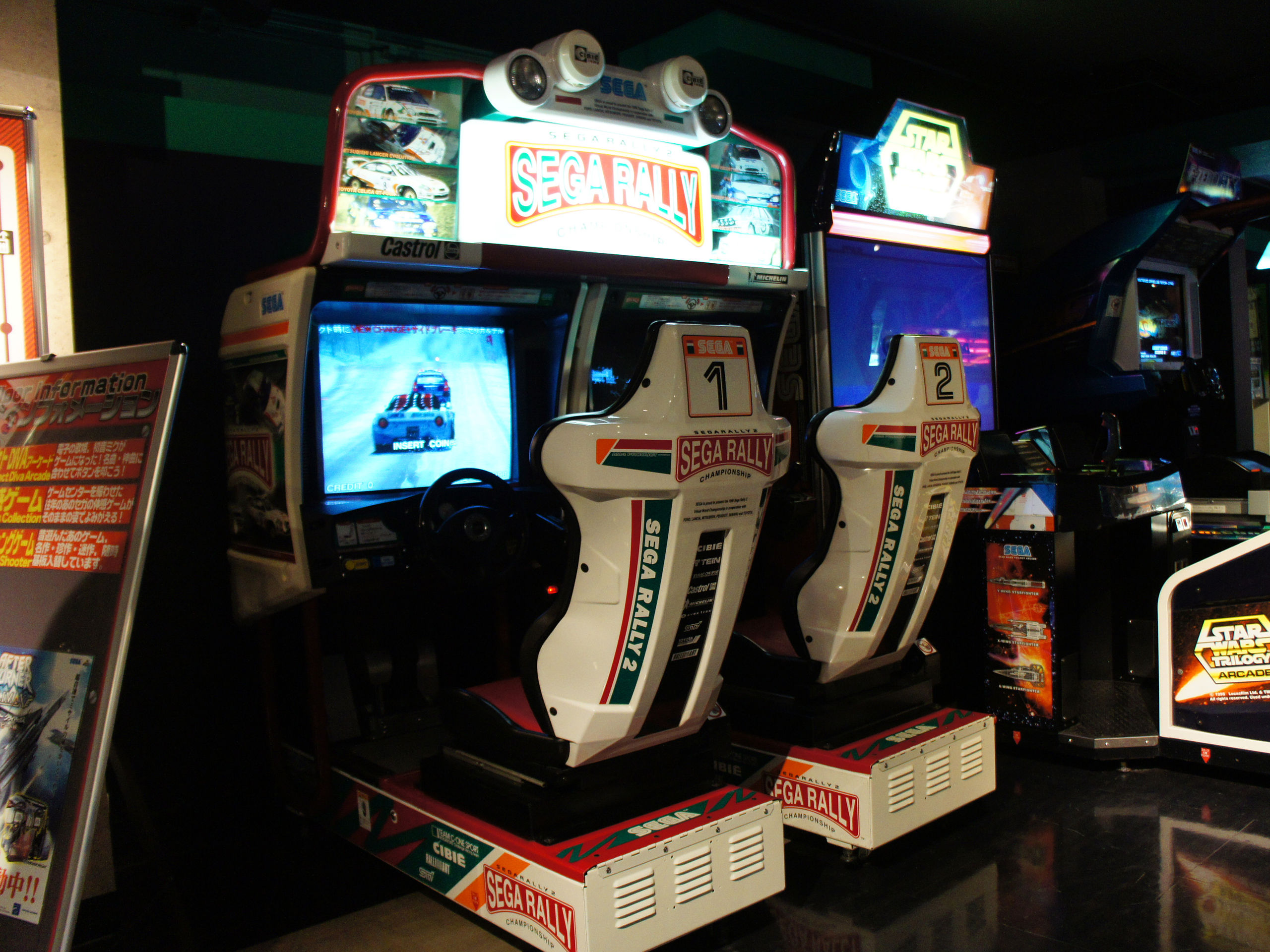
(Image by 空練~commonswiki. Licensed under the terms of cc-by-3.0.)
As for me, after “Megalopolice” was done, I started to think that I wanted to finally start a video game project. This would later be “SEGA Rally.” I borrowed space in the AM3 lab and made a team with Kenji Sasaki. I think the number of developers was about 12 people. Most were inexperienced and everyone was in their twenties. From design planning, it took about 10 months to create.
— So it was that kind of a setup. It’s basically a group of amateurs. Did you take any references from Yu Suzuki’s racing game?
Mizuguchi:
No, we didn’t. If we referenced it, it would become too similar. I wanted to create something from a new approach. I thought about using as much real experience as possible. So, first I negotiated with the company, and went location hunting from Death Valley to Yosemite.
Shimizu:
There’s only 10 months, and that’s what you do first (laughs). Well, this guy just goes on trips, anyways.
Mizuguchi:
At first, Mr. Hisashi Suzuki told me, ”A person only travels once they’ve made a hit product!” which I replied with, “No, you’re wrong. I want to go to make a hit product.” But it only turned into a dispute. So, I gave up and begged “then we’ll go with our own money, so please give us a vacation.”
— Oh, I’ve heard this somewhere before.
Mizuguchi:
Then, “If you’re going to say that much, I guess there’s no way out of it,” and gave us travel expenses.
— And this time, properly provided with travel expenses (laughs).
What kind of company was SEGA?
— Anyway, was there anything like inheriting know-how at SEGA then?
Mizuguchi:
Within the department there was, but when it came to other departments, it was a competition. Thinking back on it, I think Mr. Yu Suzuki intentionally set us up to compete. It was a time when SEGA was growing quickly.
But people were quite free to come and go. For example, if I went down one floor, Yu Suzuki was there.
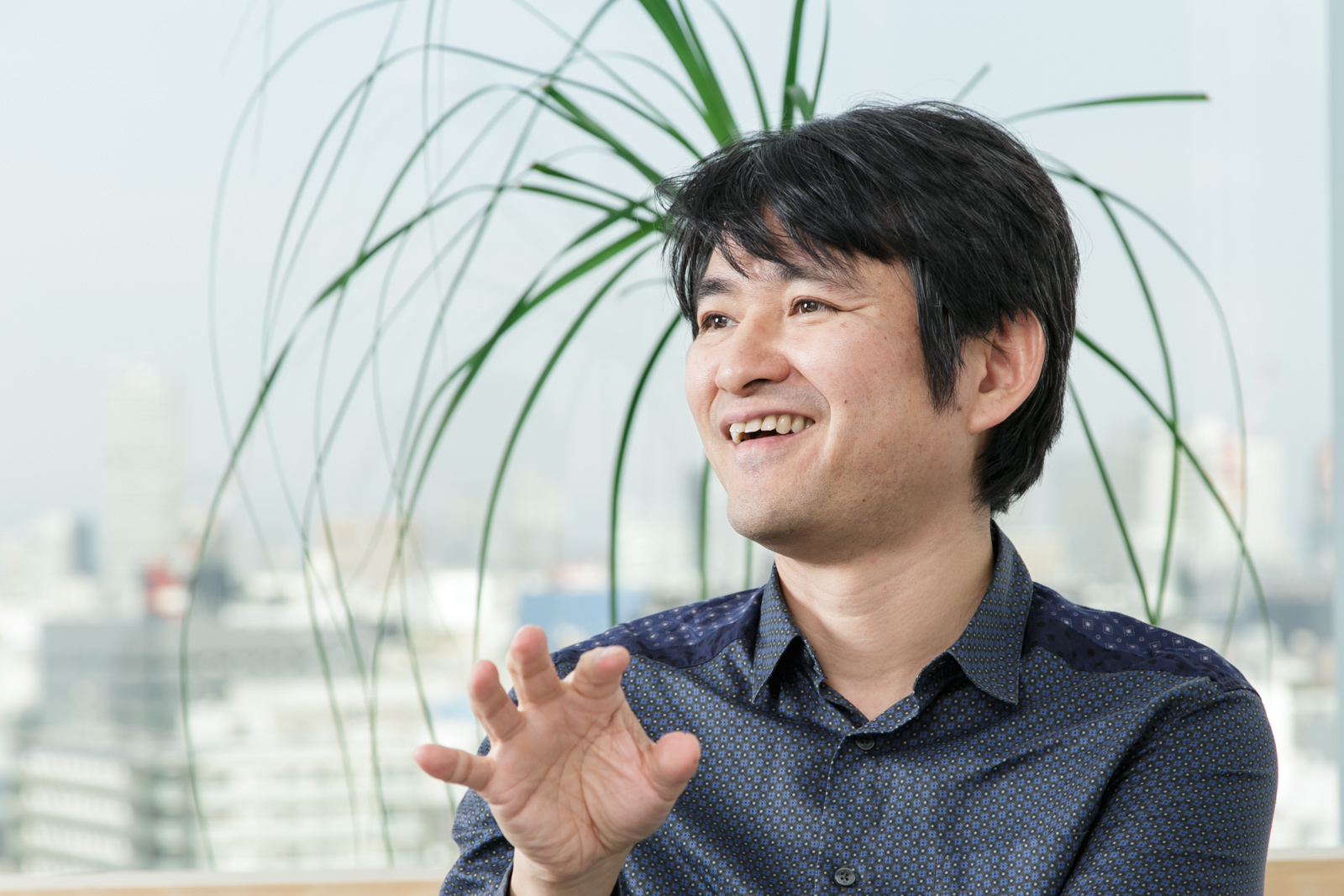 |
Over the internal extension, I would get a call from him saying, “We made this new thing, but Mizuguchi, do you want to take a look?” And I would go downstairs to see Mr. Yu’s latest demo. And I would also ask, ”I just made something. Mr. Yu, will you come by?”
— That’s wonderful. By the way, what was Mr. Yu Suzuki like in those days?
Mizuguchi:
Mr. Yu Suzuki was always thinking deeply about how to satisfy the most people. Once he was inspired, he persuaded those around him with great force and had the team moving at a tremendous speed. He had this abnormal burst— it was like he was possessed. In “Virtua Fighter” or “Virtua Racing” [*], you feel this kind of heaviness in the games he handled. Can’t you feel this heavy presence of something? Mr. Suzuki would take the images and ideas using a programmer’s senses and change it into an experience of excitement. With that, he would turn out hit after hit.
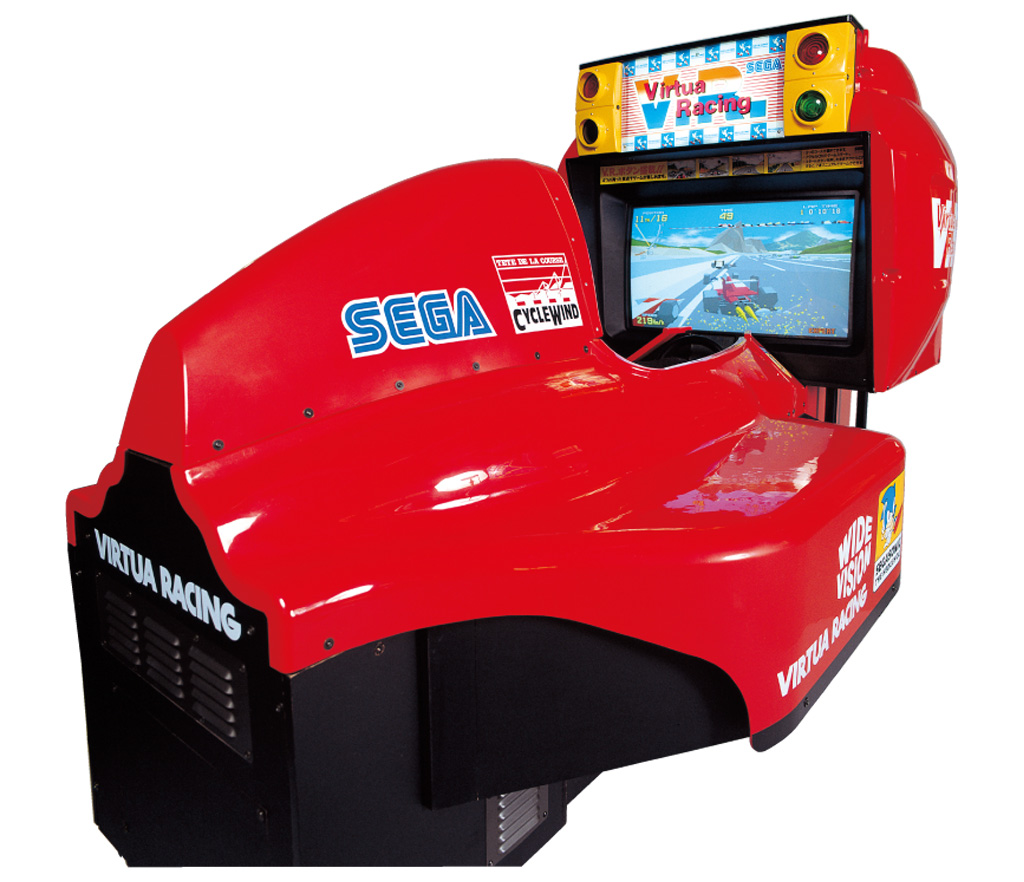
Although I talked a lot with Mr. Suzuki, I don’t have any memories where we criticized each other’s creativity. But maybe throwing around inspiration and motivation from different angles to each other. And he really liked wine. We drank a lot at the company (laughs).
— Indeed, SEGA in those days seemed to have freedom in development.
Mizuguchi:
If there was only one thing SEGA had a mission for, it might have been “create a hit work that anyone in the world can enjoy.”
— Mr. Yu Suzuki is the same, but the people at SEGA were really conscious of the world while creating.
Shimizu:
I think SEGA was a bit special.
Not only did it start out as a foreign-invested company, but also it created motion interactive games. If you go to Barcelona now, you’ll find the games made by Mr. Mizuguchi lined up in the arcade of an underground shopping street. They naturally incline to international way of thinking.
Mizuguchi:
After all, in your 20s, more than anything, it was exciting that the entertainment we made was circulating around the world.
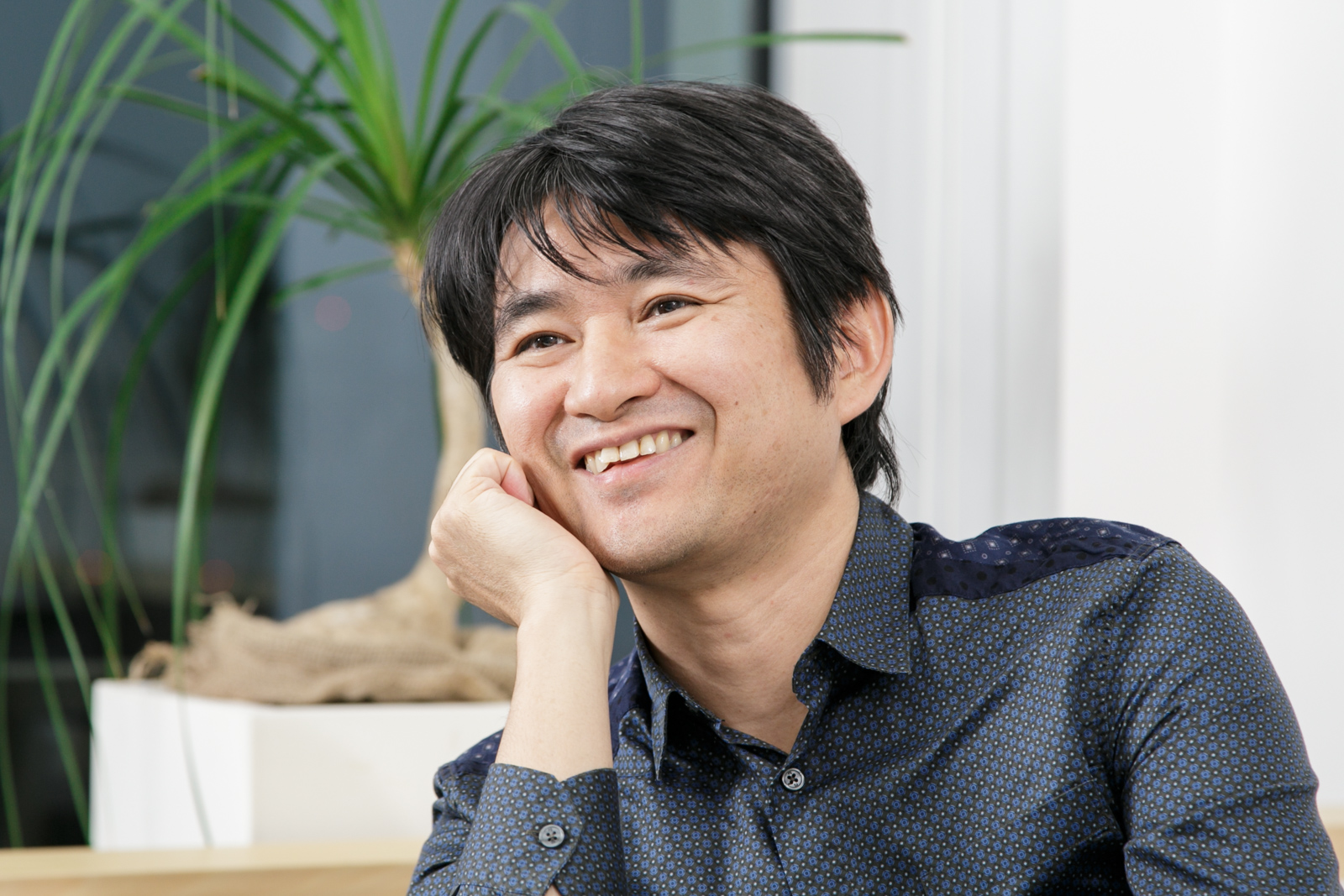 |
Because when you think that there are people around the world who are playing your game at this moment, wouldn’t you be excited without any complaints? To top it off, at that time, video games had the same power to affect one’s life like films and movies. It was a moment when it was trying to change into an enigmatic presence.
The Roots of Tetsuya Mizuguchi – 1. The resonance of MTV’s sound and image
— So “Rez” and “Space Channel” were developed after “SEGA Rally.” At this point, taking on home video games and creating original work, Tetsuya Mizuguchi’s name burst into the world. But why did you enter the world of home video games in the first place?
Mizuguchi:
After “SEGA Rally,” I produced a couple more racing games, but could see what lay ahead. It was a hunch that tremendous “engineering” was waiting ahead. It was a pursuit of real thoroughness, and my intuition told me it wasn’t my job. It’s something that someone who actually likes engineering has to do.
Shimizu:
Well, of course.
Mizuguchi:
At the same time, the then president of SEGA said they were starting the Dreamcast and asked if I would make a new team. At that moment, I felt something. It was like the second act of my creativity, or feeling like I’m getting closer to what I really want to do. So, when I was thinking about “what makes me excited, ” what came to my mind was the music videos that excited me long ago.
— Music videos?
Mizuguchi:
Yup. MTV [*1] was the formative experience of my creativity. That sensation in a-ha’s music video, ”Take On Me” [*2] where it would go back and forth between hand-drawn animation and the real world was impactful. I liked this sensation of “watching music” and not just listening to music.
*1 MTV
Abbreviation for Music Television, an American cable television channel. Started in 1981 as a specialized channel broadcasting “video clips” for 24 hours that united music with visual images. The first song aired was the Buggles’ “Video Killed The Radio Star.” And just as the song’s title, the common promotion method of pop music changed from radio to videos.
*2 a-ha’s “Take On Me”
A hit song by Norwegian band a-ha released in 1985. The music video became popular for using a technique called “Rotoscope,” which traces live-action frame by frame into an animation. Was frequently aired on MTV.
Shimizu:
Michael Jackson’s “Thriller” was so interesting that I still watch it sometimes today. It’s short, so I end up watching it on repeat.
Mizuguchi:
I liked Peter Gabriel [*1] or New Order [*2]. There is a work called “Bizarre Love Triangle” directed by a photographer named Robert Longo [*3], but it brought this physicality and artistry that made it innovative. In those days, there were a lot of songs that became popular because of the power of music video in addition to the music. I think that the arrival of music videos greatly changed the value of music.
*1Peter Gabriel
Vocalist for the Progressive rock band “Genesis,” born in 1950. Sprung into fame with the band’s unusual fashion, makeup and performance. Known by the nickname “pe-gab” in Japan.
*2 New Order
A British techno rock band formed in Manchester, with post-punk band “Joy Division” as its predecessor.
*3 Robert Longo
Artist and film director from Brooklyn, New York, born in 1953. Famous for works such as the “Men In The Cities” series.
— Indeed. Looking back on the formative years of MTV, there is a sense of satisfaction about the process where the person who made “SEGA Rally” created “Space Channel” and “Rez.”
Mizuguchi:
At that time, I finally realized that I wanted to create new expressions and experiences, rather than pursuing reality, and that video games are the best platform to make that happen.
— I watched a documentary program called “The Front Line of Super TV Information” on Nippon TV, where you spoke about an episode when you took a taxi in New York, and the driver asked about your job. When you answered “I create video games,” the driver said “That’s means you’re an artist,” which made you think about your work. It was inspirational.
Mizuguchi:
That’s true. Things like that happened….Well anyway, at that time, only the feelings of wanting to make something new, which had never existed before, were growing stronger and stronger.
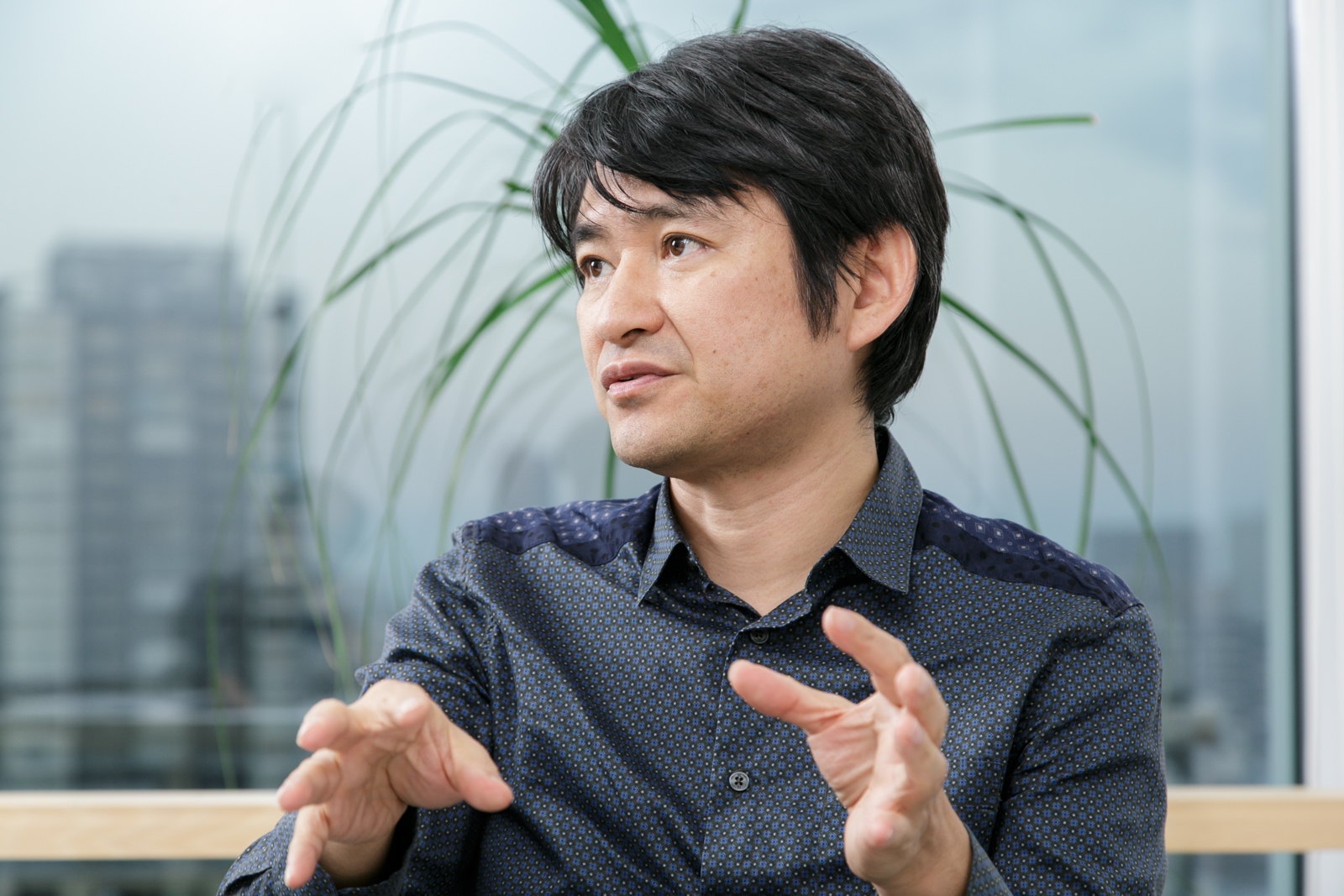 |
During the trial and error process of “SEGA Rally,” I got the basic mechanisms of video games down. Before that was the emotion design lab. So in the first ten years, I learned most of how to make video games and I started to understand a lot about the world market, too. Then I wanted to begin a practical application with “Rez” and “Space Channel.”
So, I moved development from Haneda to Shibuya and cut off the past. After all, aren’t things influenced by environment and ambiance?
— Moving to Shibuya in the 1990s and making “Space Channel” and “Rez” is a straightforward sequence of events.
Mizuguchi:
Also, unlike arcade games, I wanted to seriously rethink game design for video games you can play in the comfort of home.
— Oh, so does that mean when designing “SEGA Rally,” study wasn’t necessary?”
Mizuguchi:
No, that’s not true, but racing games are structurally simple in the first place. It was a really good way to learn how to make video games. There is no doubt that the trial and error then became the basis of my own game design methods afterwards.
But to make games like “Rez” or “Space Channel” that were unprecedented, you have to start from “zero.” There’s no book written about how to design a video game.
So I relied on the ideas from Mr. Mitsuhiro Takeumura’s “Media Ecstasy.”
The Roots of Tetsuya Mizuguchi – 2. The ideas and influence of Mitsuhiro Takemura

(Image from Amazon)
— Finally Mr. Takemura’s name makes an appearance. Probably most young people who are reading this article won’t recognize Mitsuhiro Takemura’s name. A researcher of “media aesthetics” covering everything from media theory to technology, art and occultism. But in any case, we can consider him as a kind of evangelist who actively introduced the IT culture that has roots in the West Coast hippie culture to Japan before the 90s. And can I ask about your relationship with him?
Mizuguchi:
The first time I met Mr. Takemura was impressive … When I was a third year at Nihon University College of Art, I went to listen to his lecture for the first time. He was standing in front of the blackboard for 90 minutes but I couldn’t understand most of what he said. In an art department lecture, he suddenly uses words like “automaton.” [*]
※automaton
Considered a device that imitates the movement of people and animals and a self-operating machine that processes information. Or a mathematical model representing the mechanism of the computer. The subject of research in the field of information science as an abstract model of automatic machinery.
Shimizu:
That’s just talk about computers. (laughs).
 |
Mizuguchi:
But I knew that he was talking about something important. On the contrary, that was shocking and so I tried to join his seminar at least once. As a result, my life changed from that point. Back then, I was a student who only valued my intuition more than knowledge and information. But after meeting Mr. Takemura, I realized that information and knowledge are an incredible fertilizer for intuition. My eyes were forced open.
— It seems that the influence of Mr. Takemura was a critical moment for the game designer, Tetsuya Mizuguchi. A person who not only taught IT knowledge, but deeply influenced Mr. Mizuguchi to the conception of the “synesthesia” in Rez [*].
*Synesthesia
A phenomenon in which different kinds of sensations arise not only from the typical stimulus but also a secondary stimulus, such as “feeling taste by listening to sound” and “smells from words.”
Mizuguchi:
Mr. Takemura’s “media aesthetics” … is deep.
To seek aesthetics from media is thrilling. As far as the relation between media and occultism, most modern people can’t understand it. But once you learn its origins and history, various things in contemporary IT culture and media culture start to make more sense. I was captivated by “media aesthetics.” I buried myself into researching about how subculture led to the new age in modern media history. It might have been the most I’ve studied in my life(laughs). Also”Holophonics” [* 1], “VR”, “Synchro Energizer” [* 2], “Isolation Tank” [* 3] … ….
*1 Holophonics
Developed by Argentinean engineer Hugo Zuccarelli. A trademark of sound recording technology that brings out stereoscopic sound effects. Even though there are two speakers (a general stereo playback device), the sound source recorded by this technique gives a sense that the sound is transmitted from all directions.
*2 Synchro Energizer
A system that imitates a psychichedelic effect without using drugs such as cannabis. As it is a machine, it is not illegal. Considered healthy as it tries to eliminate stress by applying mind control.
*3 Isolation Tank
A device invented by Dr. John C. Lilly of the US National Institute of Mental Health in the 1950’s for the study of sensory deprivation. In a space where light and sound are obstructed, skin sensibility and gravity sensation can be largely restricted. The research attracted attention and the experience was gradually compared to a mystical experience.
Shimizu:
I remember the”isolation tank!” I tried to imitate it and made my room dark, sealing everything (laughs). So he was a teacher who taught things like, “You do that in the art department?”
The evolution of technology is regulated by human desire
Mizuguchi:
Around that time, Mr. Takemura was working on a project called “what exists beyond the senses” with Dentsu’s marketing department. It was an investigation about “desire,” the backside of a sensation like our five senses . It started from the theory that “a new product can be created from digging into our deeper layers …”.
– The desire of our eyes or ears ……? It sounds kind of strange.
Mizuguchi:
For example, cameras exist as an extension of human vision, and headphones as an extension of hearing. So the development and change of human beings is affected by human “desire,” no?
— Ah, I see. Long ago, there was a book that introduced how in the late 19th century to the beginning of the 20th century, when devices such as the gramophone and radio communication appeared, people treated these devices in such odd ways that us modern people couldn’t even imagine. I remember being surprised after reading that. But in the end, such absurd handling is weeded out in the process of technological evolution and marketing and the proper use of each device is established.
Mizuguchi:
Yes. So it’s not “technology can,” but “how do we want to use that technology?” Essentially, “wants” have to exist among humans, because no matter how great the technology, it’ll just go into the trash can.

The internet is the same, too. As long as it’s something that humans are using, it’s impossible to not evolve in a way that doesn’t match our desires or instincts. Either way, in the evolution of the media, human “intent” is hidden. What do humans desire and the “space of desire” exists in background .
— So basically, within humans’ desires, there is a kind of law rooted in human instincts.
Mizuguchi:
I think that all designers are designing the reason for that “desire.” Since then, the search and research of “wants” has become my life’s work. And one day, after factoring “wants” repeatedly, I noticed that this method can be applied to any design.
— Does “factoring” mean that a desire can be understood by combining it with desires of lower layers?
Mizuguchi:
For example, you’re not usually aware of it, but behind the desire to “travel,” there are many other needs. So, if you ask “why?” you can factor it into another desire.
— Oh, even one trip is always different. “I want to eat something delicious” or “I want to make an excuse to invite the girl I like” (laughs). Hearing it that way, it’s rather simple.
Mizuguchi:
Right?

(Image from Amazon)
And if one “wanted to be healed” on a trip, the next step is to ask “why do you want to be healed” and factor it. Then, like the structure of the human mind presented by Marvin Minsky at the “Society of Mind,” a tree-like structure of this desire appears. And when you follow it, “the reason for these desires” or “the process towards that point “ becomes clearly visible.
— I see. Mr. Mizuguchi is perceiving this “tree structure of desire” as an objective existence, not a individualistic one. If so, the network structure from the analysis of “wants” can be applied to other works and products as well.
Mizuguchi:
Exactly. I decided to apply that method to the design of the video game itself, the first thing I practiced on was “Rez” and “Space Channel.” It was exactly this “tree structure of desire” that supported the creation of those works.
Combining “Space Channel” with Maslow’s theory
– So, is there such a tree structure written in the plan of “Space Channel”?
Mizuguchi:
There was a copy written on a whiteboard, but … this will be the first time disclosing it to the public.
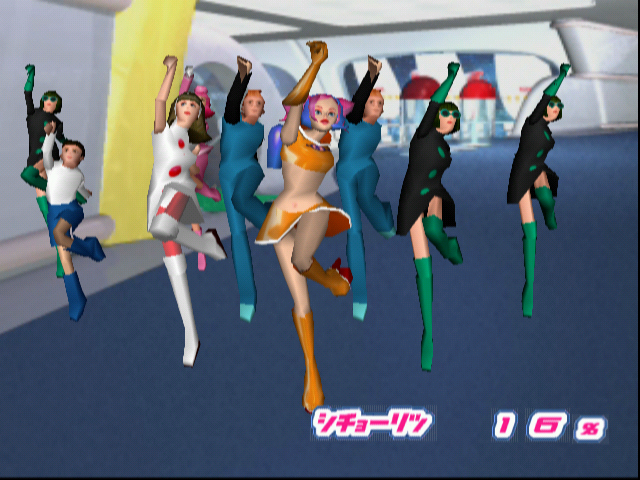
In the ending of “Space Channel,” Ulala, the leading character who is a TV reporter, brings the people, aliens, rivals and Michael Jackson to bring down the evil people with dancing and singing. It ends by collecting the highest viewer ratings and becoming “the most popular reporter in the universe,” right?
Shimizu:
Oh, I love that ending for “Space Channel” .
Mizuguchi:
In fact, all the elements of that game are heading towards that last scene. One time, with the staff, we created a tree structure analyzing the path to this ending.
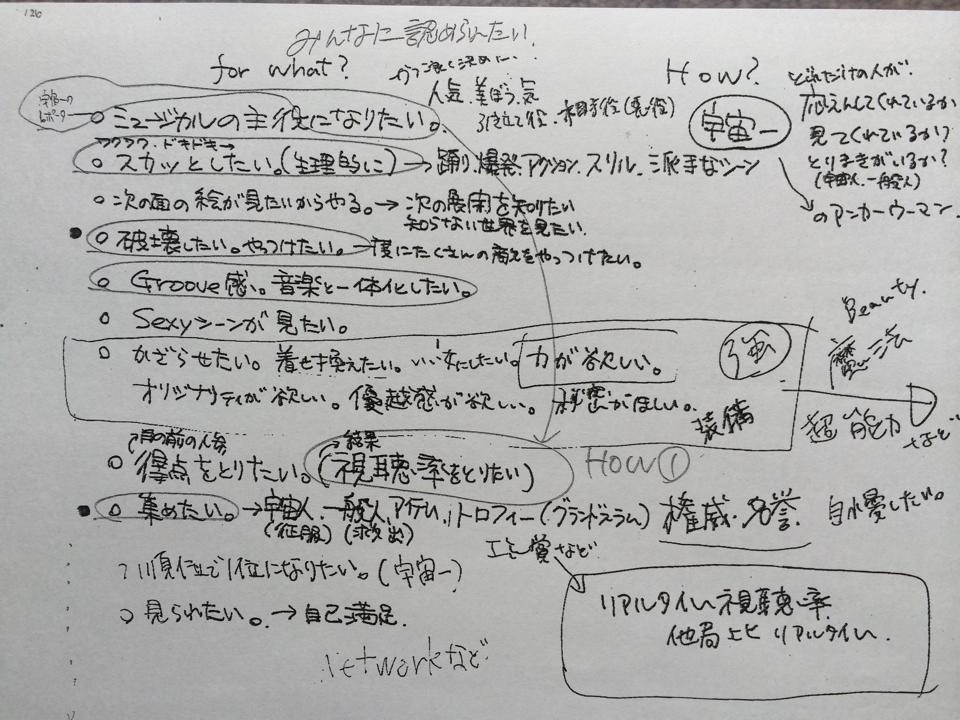
For example, you factor Ulala’s desire to be the “most popular reporter in the universe” with “why?” Then, another desire emerges behind it, like “I want to get the highest viewer rating” or “I want to get an exclusive.” And as we continue to factor further, we find more desires, like “I want to expose evil,” “I want to save the earthlings,” “I want to walk with everyone,” or “I want to dance well.”
We combine these with the personality of our hero Ulala, and, one by one, place it into an action. Eventually, with the accumulation of these actions, it’s changed into Ulala’s experience of self-actualization, which became the basis of “Space Channel’s” structure.
— It sounds like Maslow’s Hierarchy of Needs.
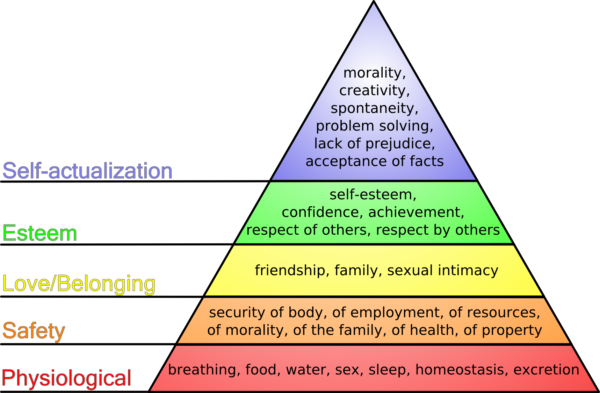
Mizuguchi:
Yes, I tried it exactly in practice and was convinced.
— It looks like it was proved to be quite a practical method with the success of the game.
Mizuguchi:
At that time, I don’t think the word video game design existed, and of course, information about a practical way to draw out the architecture of a video game.
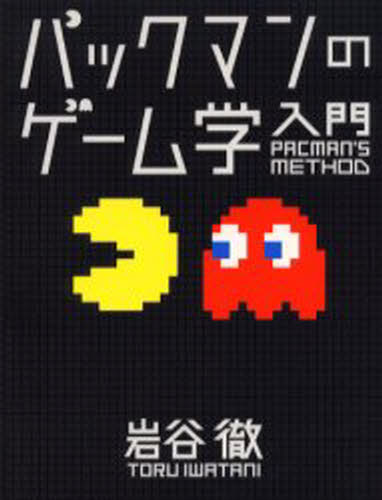
(Image from Rakuten Market)
Toru Iwatani of Namco, who created “Pac-Man,” often said, “I design games from ‘verbs’ like ‘to eat.’” But other than that, I didn’t hear much else.
Shimizu:
Back then, video games were really born out of “luck”.
— I’m going to digress, but is it true that Mr. Mizuguchi requested a retake from Michael Jackson for “Space Channel?”
Mizuguchi:
That story …. It’s true (laughs).
To explain properly, about a month before production ended for “Space Channel,” I got a call from Shuji Utsumi, the EX producer who was in the US. He said, “Hey! Michael wants to appear in this game!” And I asked, “Which Michael is that?” and he replied “Duh! Michael Jackson!” Of course I was happy, but with only one month of production, I thought it would be impossible to add Michael Jackson as a new character.
I didn’t think it would have satisfactory quality. So I came up with an idea that players will rescue a dancing Michael.

Shimizu:
But, that’s pretty rude, no? (laughs)
Mizuguchi:
Actually, I thought I could make Michael himself refuse (laughs). It was a strategy to make a suggestion he would absolutely refuse and I could reply with let’s make it properly in the next game. But…. I got an OK from Michael with that idea and was told to send his lines promptly.
— Wow (laughs).
Mizuguchi:
So, I hurriedly wrote lines like “Ulala, Help!” Or “Poh!!”and sent it to Michael. About a week later, the voice recording came back..
I listened to it with the team and we all turned pale.
I think people who have played will understand, but all the voices in ‘Space Channel’ are really lively. Except the recording from Michael wasn’t enthusiastic. I really wanted something like “Ulala HEELLLPP! Save Me!! Poooh!!!” but what came back was “Help …… He..l..p ……” in a weak voice… after hearing it, the situation was “This is really bad. There’s nothing we can do to increase the energy in this…”
 |
Shimizu:
Was there no option to delay production? (laughs)
Mizuguchi:
From the beginning, the release date for “Space Channel” was decided as December 24, 1999. It was supposed to be the last Christmas present of the 90s(laughs).
So there was no way it could be delayed. I asked Michael for a retake saying , “Please redo this really enthusiastically.”
Shimizu:
And you already tried to refuse him once. Amazing.
But now I have to say, “Sorry!” I really want to continue listening to this conversation, including “Space Channel,” but my next appointment is soon. Can we talk about “Rez” a little bit before I leave?
— Sorry, everything is too interesting. I ended up asking other things before the main topic ….
Mizuguchi:
Actually, I have a dentist ‘s appointment today too… (laughs). I guess I’ll just have to cancel(laughs).
Ok, I got it. Let’s go all out today! (calling the dentist)
— Oh … … Thank you very much!
Shimizu:
You’re amazing Mr. Mizuguchi. Are you sure it’s ok?
Then, I’d like to talk a little about “Area X.” Actually, I think this work has lost it’s meaning as a video game… Because it’s obviously fun, but there’s no need to operate and defeat enemies.
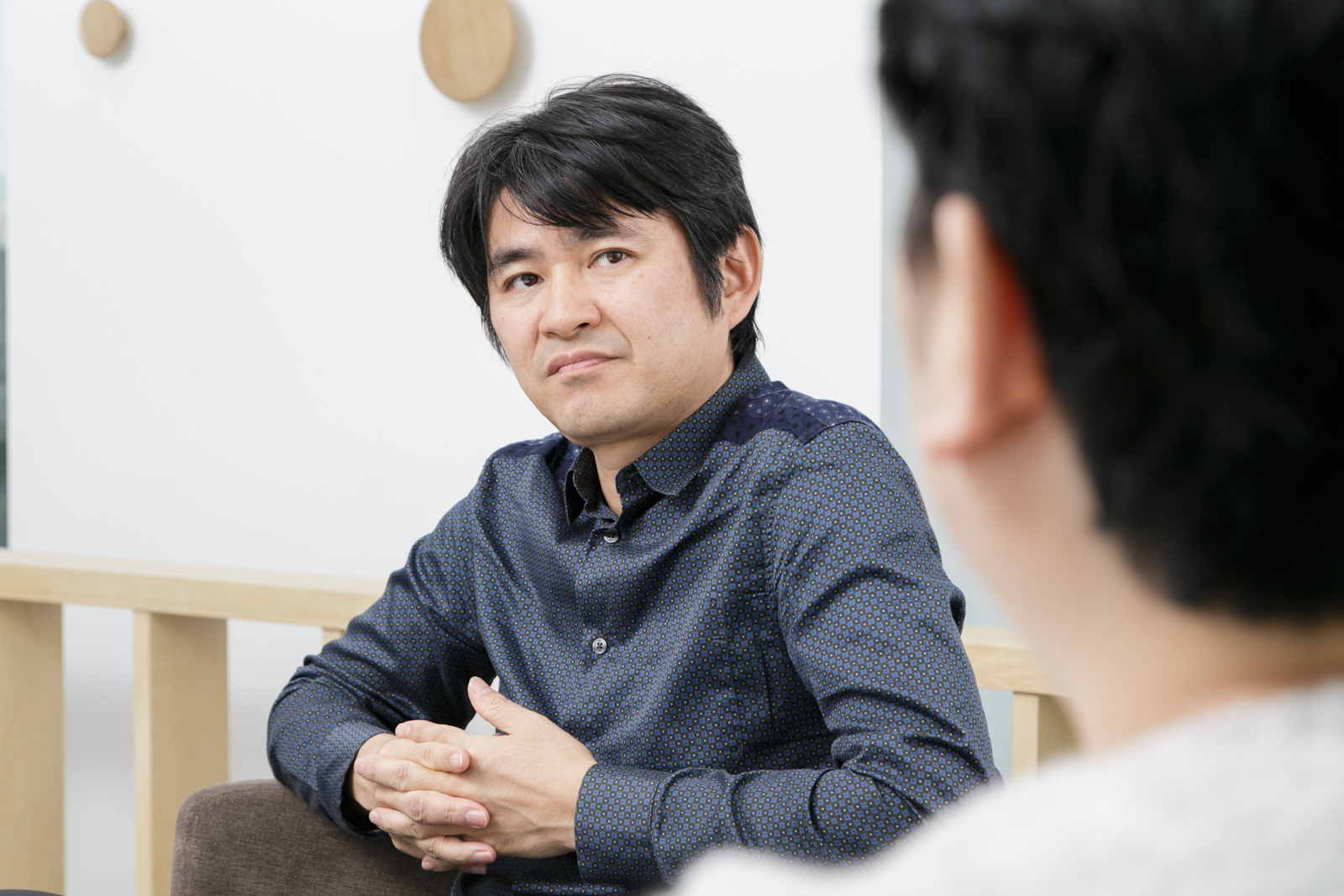 |
— That’s true. Raising that question is really interesting and satisfying. If Mr. Mizuguchi’s vision was first completed in “Area X,” before discussing the details of “Rez,” it would be better to discuss “Area X” first.
